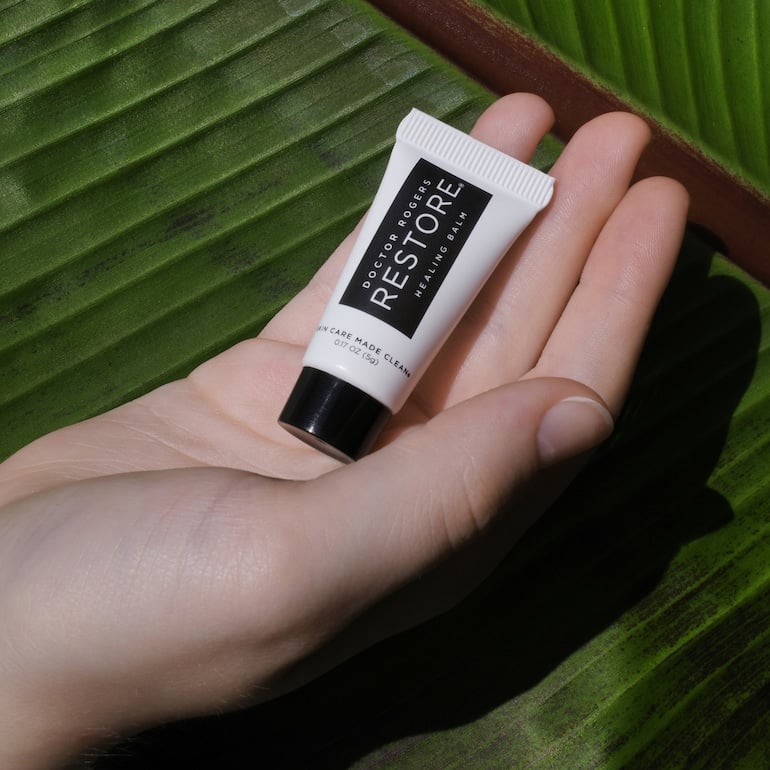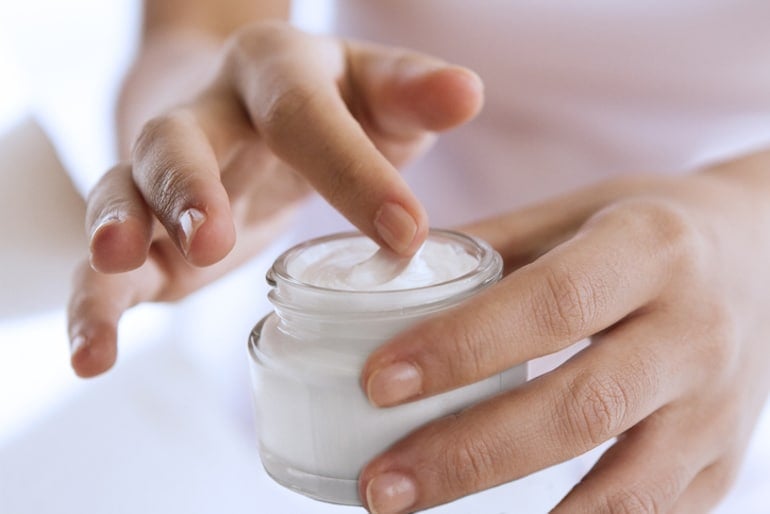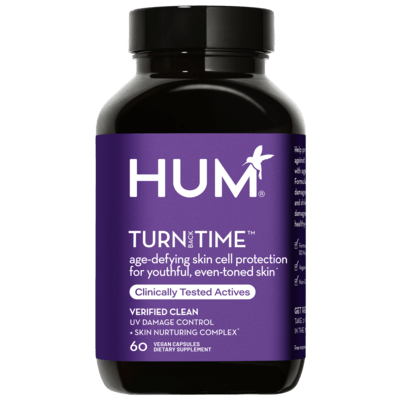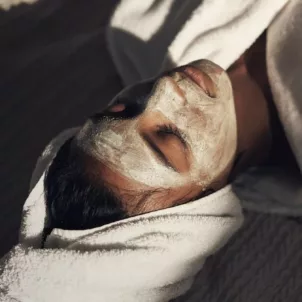Dermatologist Heather D. Rogers, MD, founder & CEO of Doctor Rogers RESTORE, sets the record straight on 10 common skincare myths.
Whether or not you’re skincare-obsessed, chances are you’ve heard conflicting info on the best ways to care for your face. But with so many opinions out there—professional and otherwise—it can be difficult to differentiate fact from fiction. Thankfully, Dr. Rogers is here to provide definitive answers.

Doctor Rogers Confronts 10 Skincare Myths
Myth 1: Certain foods and scenarios will always cause breakouts
False on this one. “You can’t tell with certainty what causes a flare-up, and there’s great variability between people,” Dr. Rogers explains. “Some people [blame] dairy, while others can drink milk all day long. Also, stress/elevated cortisol and shifts in estrogen and testosterone levels can cause breakouts in some and not in others.”MYTH 2: It’s okay to pop whiteheads
Dr. Rogers actually says it’s doable if done correctly. “You can only pop a whitehead after a shower or if you’ve used a warm compress to soften the pimple. Then gently squeeze it, using a tissue wrapped around your index finger, to ensure your nails don’t hurt your skin. Push firmly but not hard. If it doesn’t pop, try again later.” She further warns that if you try to pop another type of breakout, you’re more likely to exacerbate it by causing greater inflammation and increasing the risk of scarring.Myth 3: higher SPF means better sun protection
Close, but no cigar. Dr. Rogers explains that theoretically, SPF is the multiple of time by which you can stay in the sun and not get burned. (For example, if you only start burning after 10 minutes without protection, SPF 30 should keep you *covered* for 300 minutes.) However, she explains, “it doesn’t work that way for three reasons:- No one applies sunscreen as thickly as they do during testing. Studies show we typically apply half as much, so an SPF of 30 really becomes only an SPF of 15.
- As soon as you get in the sun, the sunscreen starts to break down, which is why we need to apply sunscreen every two hours no matter what the SPF is.
- SPF is only a measure of protection from UVB, and we now know you need protection from UVA as well. So even if the SPF is 100, if it’s not broad-spectrum, you’ll still get sun damage from UVA rays.”
Myth 4: UV exposure is the leading cause of premature aging
Another truth. UV exposure is, in fact, the leading cause of premature aging—and not to mention a serious health risk when unprotected. So what should you do? Dr. Rogers recommends using a sunscreen with a minimum SPF 30 and 10 percent zinc oxide. “This combination ensures excellent, broad-spectrum protection. It also limits your exposure to chemical sunscreen that your skin easily absorbs, particularly when you’re reapplying every two hours,” she advises.Myth 5: I don’t need sunscreen when it’s cloudy or I Stay Indoors
Dr. Rogers says this skincare myth applies only if aging doesn’t concern you. “Your risk of sunburn is lower, but UVA rays still come through clouds and windows. They penetrate deep into your skin, breaking down collagen and causing brown spots,” she explains. Assuming that none of us want that, she recommends wearing sunscreen 365 days a year, no matter the conditions. “We’re creatures of habit. If you start wearing sunscreen on a daily basis, then you’re less likely to be caught without it.”Myth 6: Genetics Outweigh Skincare and Lifestyle Choices
Dr. Rogers explains that good genes are a gift. But at the same time, you can’t call victory or defeat based on your DNA alone. No matter the case, you still have to take a multifaceted approach to skincare. Furthermore, no one’s guaranteed to have “good” or “bad” skin throughout their lives. “If you had clear, porcelain skin as a teenager, you’re often at risk for lots of fine wrinkles as you age. If you had oily, acne-prone skin as a teenager, you often age better from having that extra oil. And those who have darker skin tones and tan well often have persistent brown spots to treat later in life,” she elucidates. “No matter your skin type and color, you still need to take care of it if you want to slow down the aging process.”Myth 7: Drinking water is the best way to achieve beautiful skin
As healthy as water is for overall health and wellness, it’s not the end-all, be-all for glowing skin. In addition to hydrating, Dr. Rogers recommends the following best skincare practices:- adhering to a daily skincare regimen of cleansing morning and night, using antioxidant serums, and applying sunscreen
- exfoliating with acids a few times a week
- undergoing treatments to promote cell turnover
- eating a well-rounded diet with lots of fresh fruits and vegetables
- not smoking
Myth 8: You shouldn’t use facial oils if you have oily skin
“Facial oils can be great for oily skin, particularly for cleansing. Like binds to like, so an oil cleanser can be very effective in pulling oil out of pores. However, people with oily skin typically don’t need much more oil,” Dr. Rogers explains. Still, she adds that less saturated oils (argan, castor) will be their best choices.Myth 9: Dry skin and dehydrated skin are the same
Totally false. “Oily skin can be dehydrated, meaning there’s not enough water content. To remedy this condition, drink more water and less coffee,” she advises. Conversely, “dry skin means your body isn’t producing enough natural moisturizing factor or oil. Thus, you have to give the skin more oil by using thick moisturizers containing emollients.”
Myth 10: Regularly applying lip balm can cause dependence
“If your lip balm contains ingredients that irritate your skin (menthol, camphor, lanolin, fragrance, etc.), it’ll make your lips feel better temporarily. But then it’ll irritate the skin again, thus making you need more lip balm,” Dr. Rogers explains. Instead, to actually heal and reduce the need for reapplication, look for a balm that’s clean and free from irritants, such as Doctor Rogers RESTORE Healing Balm. As a self-professed lifelong lip balm addict, I was grateful to get the skinny on this final skincare myth, and look forward to RESTORE-ing my pout in no time.More like this










